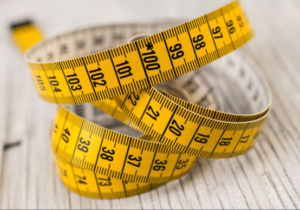Measuring tools are essential in many industries and daily activities for measuring lengths, widths, and heights. They are crucial in construction, tailoring, fitness tracking, and advertising. This article explores the various types of measuring tools, including tape measures, their applications, and usage scenarios.
Introduction to Measuring Tools
A measuring tape typically consists of a flexible or rigid strip with markings to indicate units of measurement, such as inches or centimeters. The flexibility and portability of these tools make them ideal for both small-scale and large-scale measurements.

- Flexible Measuring Tapes for Tailoring and Fitness
These are ideal for measuring curved surfaces or body dimensions. They are commonly used in tailoring and fitness tracking. Flexible measuring tapes are made from materials like nylon or fiberglass, which provide durability and resistance to wear.
- Surveyor Measuring Tapes for Land Surveying
Long and flexible, these are used for measuring large distances, such as in land surveying. They are typically made from durable materials to withstand outdoor conditions. Surveyor tapes can be incredibly long, reaching up to 500 feet, making them perfect for mapping land and determining boundaries.
- Digital Measuring Devices for Precise Measurements
Also known as laser measuring tools, these are used for precise long-distance measurements without physical contact. They are highly accurate and often used in construction and engineering projects. Digital devices offer features like increased accuracy, hands-free use, and convenience in measuring hard-to-reach areas.
- Carpenter’s Composite Folding Ruler for Tight Spaces
A compact tool used for measuring in tight spaces, often used in carpentry. It combines the functionality of a ruler with the flexibility of a measuring tape.

Applications of the Tools
- Home and Construction Projects
- Classic Steel Measuring Tapes: Durable and suitable for most home projects. They are resistant to wear and tear, making them ideal for rough environments.
- Silicone Measuring Tape Snap Bracelets: Convenient for quick measurements and can be worn on the wrist for easy access.
- Carpenter’s Composite Folding Ruler: Useful for measuring in tight spaces.
- Fitness and Body Tracking
- Flexible Measuring Tapes: Used for body measurements and tracking progress. They are essential for monitoring changes in body dimensions over time.
- BMI and Waist Tapes: Specialized for health-related measurements, providing accurate readings for body mass index calculations.
- Advertising and Marketing Strategies
- Customized Tapes: Used as promotional items with company logos. They serve as practical giveaways that also promote brand awareness.
- Education and Training
- Measuring tools are used in educational settings to teach measurement skills and concepts. They help students understand real-world applications of mathematics.
How to Read a Measuring Tape

Reading a measuring tape involves understanding the markings on the tape. The main markings indicate whole inches, while smaller marks represent fractions of an inch (e.g., 1/8, 1/4, 3/8, etc.). It’s essential to familiarize yourself with these markings for accurate measurements.
Features of Measuring Tools
- Blade Types: Lacquered steel, nylon-coated steel, fiberglass, and stainless steel. Each material offers different benefits in terms of durability and resistance to environmental conditions.
- Blade Start Types: Type A, B, and C, depending on the scale’s starting point. This affects how measurements are taken and interpreted.
Maintenance and Care of Measuring Tools
To extend the life of your measuring tools, it’s important to clean them regularly and store them properly. Avoid exposing them to extreme temperatures or moisture, as this can damage the material.
Safety Considerations When Using My Tools
When using measuring tools, ensure you are in a safe environment. Avoid stretching the tape across walkways or areas where it might cause tripping hazards. Always secure the tape when measuring heights to prevent accidents.
Frequently Asked Questions
- What are the different types of measuring tools?
- Flexible, surveyor, digital, carpenter’s composite folding rulers, steel, fiberglass, and Invar tapes.
- How do I read a measuring tape?
- Main markings indicate whole inches; smaller marks indicate fractions of an inch.
- What are measuring tools used for?
- Construction, tailoring, fitness tracking, advertising, and more.
- What is a digital measuring device?
- A device that uses laser technology to measure distances without physical contact.
- How do I choose the right measuring tool for my needs?
- Consider the type of project, the environment, and the desired precision.
- How do I maintain my tools?
- Clean them regularly, avoid extreme temperatures, and store them properly.
- What are the benefits of using a digital measuring device?
- Increased accuracy, hands-free use, and convenience in measuring hard-to-reach areas.
Conclusion
Measuring tools re essential in various industries and personal projects. Understanding their types and applications can help you choose the right tool for your needs. Whether it’s for measuring body dimensions, surveying land, or advertising, there’s a measuring tool designed to fit your purpose. By incorporating images and videos, this guide aims to provide a comprehensive overview of measuring tools and their uses.

